Numismatic Articles
Van Arsdell 2015f (Info)
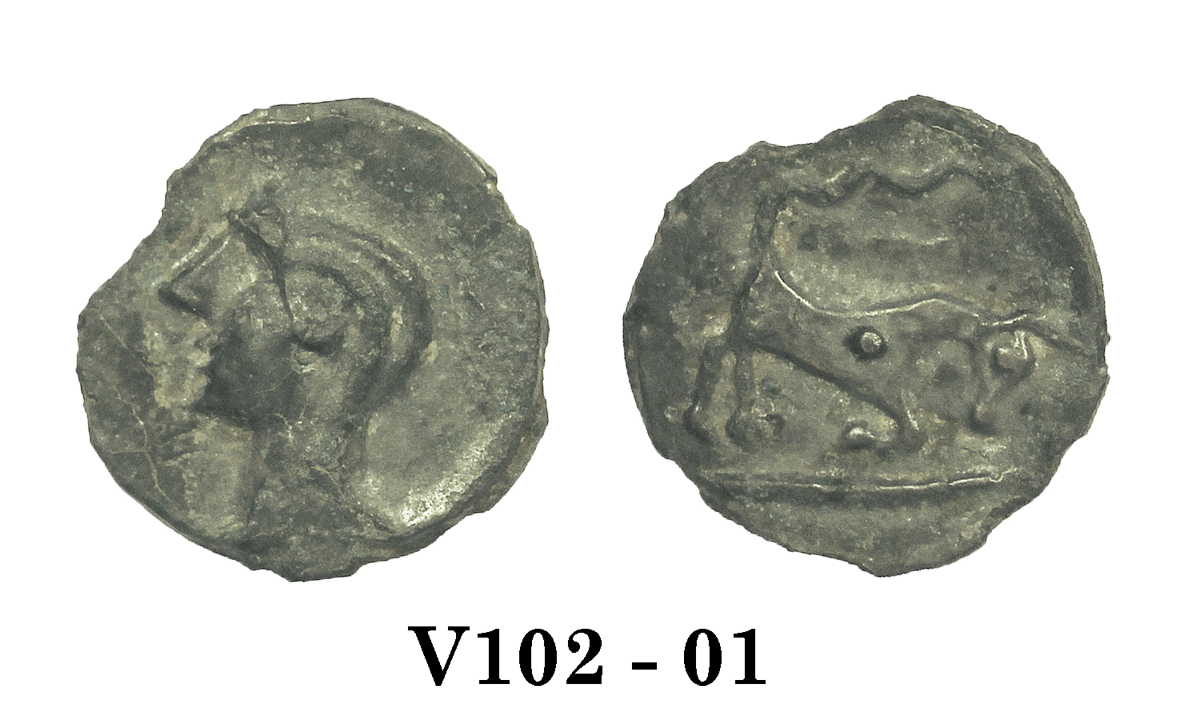
Semiotics of Celtic Coins XI – Producing and Interpreting Replicas
By Robert D. Van Arsdell
The previous article in this series described some characteristics of Replicas (info) (see Van Arsdell 2015e).
This article discusses how Replica images can vary – information that can be useful in identifying them. The discussion then turns to the vast range of sources that can inspire the creation of Replicas – and offers cautionary notes about over-interpretation.
Spotting Replicas
When a widely known symbol is copied onto a coin, the resulting image is a Replica (info). One precondition for using Replicas is that everyone must recognize them. When this condition is met, a predictable message can be conveyed.
Usually, Replica images can be stripped down to the barest essentials and still communicate the message. Only few key elements of the original design need be placed on a coin to produce the desired effect. An exact, detailed copy of the original symbol is often not needed. Eco describes the selection of the elements that need to be copied as a mapping function (info).
One need only think of the representation of Britannia on modern British coinage to understand this concept. The image varies from coin type to coin type and on some coins a lion accompanies the seated figure. However, despite the variations and with or without the lion, the seated figure is still recognized as Britannia.
Also compare the image of St. George and the Dragon on an 1887 Crown to that on the 1935 “Jubilee” Crown. The image on the Victorian design is very detailed and representational, that on the George V coin carries a more abstract image. Yet everyone recognizes the image as St. George and the Dragon (info).
A Replica only needs the minimum number of design details to convey the intended meaning. Thus, die-cutters can strip out unnecessary details when an image is placed on a smaller coin. In other instances, images are made more abstract over time and the unnecessary elements are eliminated in the process.
Whenever images on coins vary in detail or abstraction, be alerted – they might be Replicas.
Producing minimal images – abstraction
Two Cast Bronzes demonstrate nicely how Replica images can be simplified by abstraction.
The Cast Bronze shown at the top of this article likely carries two Replicas. Each side of the coin has a single image, a head and a bull, with no other complicating elements. These motifs were adapted from Gaulish coins, in turn inspired by coins of Greek Massilia.
The act of image copying provides one reason to believe we are looking at Replicas. The lack of other complicating image elements is a second reason to believe so (info).
But there is a third reason, as well.

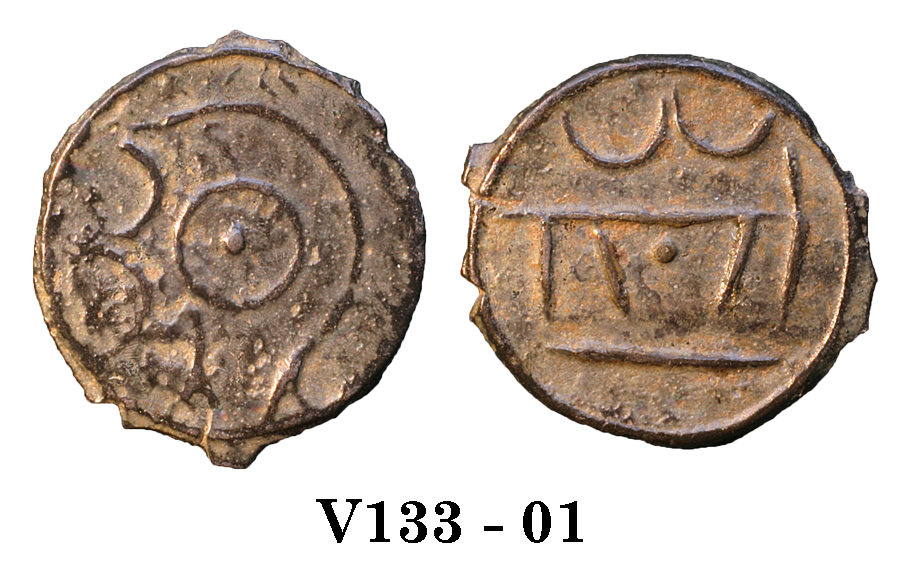
Note that the basic image is just as well conveyed by the stick figures on V133.
On V102 the images are shown somewhat realistically, with a few details. The head shows a mouth and the bull has hooves, for example. On V133 the images are reduced to stick figures, with no details whatsoever. The simplification of the image via abstraction is another reason we may identify these images as Replicas (info).
Once we have identified these images as Replicas, we should then undercode the meaning. The denotations are simply a head and a bull. The connotations probably identify the coin’s issuing authority or the ethnic group using the coins.
What might happen if we overcoded the meaning?
We might hypothesize that the issuing authority was the same for the entire run of these cast bronzes. The images ought to vary more than they do, had the coins been issued by different authorities. Different kinds of images might appear: new animals replacing the bull, for example, connoting different issuers. But by suggesting this additional hypothesis, though it may be correct to do so, we run more risk of being wrong. We need other information to support the new hypothesis.
Another way we could overcode the meaning would be to analyze the source of inspiration for the images. This is one of those cases where we can do so with some confidence, because the images are ultimately derived from coins of Massilia. Consequently, we might study the meaning of the images on the Massiliot prototypes. We could suggest the British rulers borrowed the Code for the images as well as the motifs. We could suggest some complicated story lurks behind the stick figures on V133.
But to do this, we should be able to offer arguments that the Code had indeed been borrowed. For example, if an ancient author had written that the British, the Gauls and the Greeks had the same idea in mind when they used these images, we could claim the Code had been borrowed. But we have no such evidence.
Furthermore, by the time the British used these motifs, their Massiliot meaning had likely been forgotten or at least was no longer understood by everyone. Thus, the meaning to the British may have had nothing to do with the original Massiliot understanding of the imagery.
We might even be uncertain of the original Massiliot meaning of the imagery. If it was placed on the Massilia coins as a Replica, it may mean nothing more than “coin of Massilia”. Any meaning the head and bull may have had beyond that would be irrelevant in this case (info).
Overcoding would probably be the wrong thing to do in the absence of other information.
Producing minimal images – simplification of details
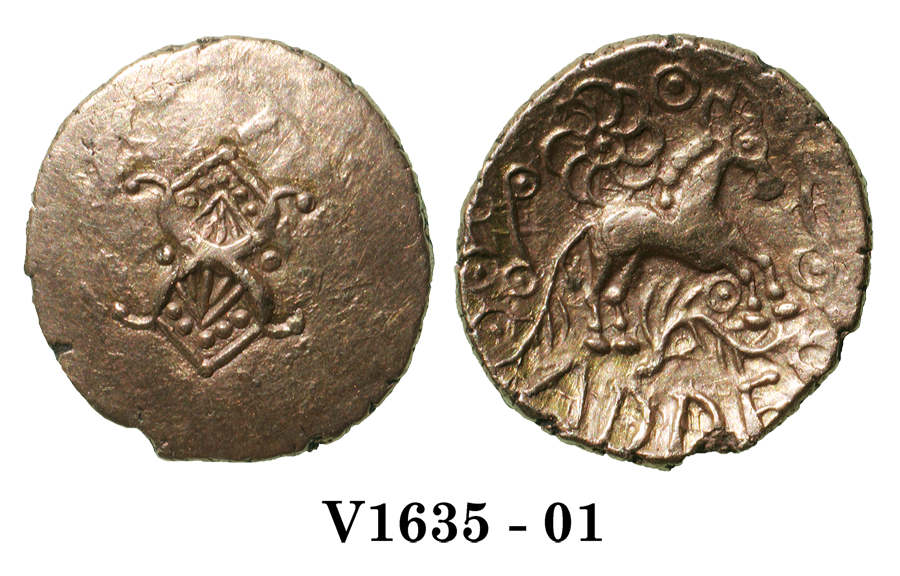
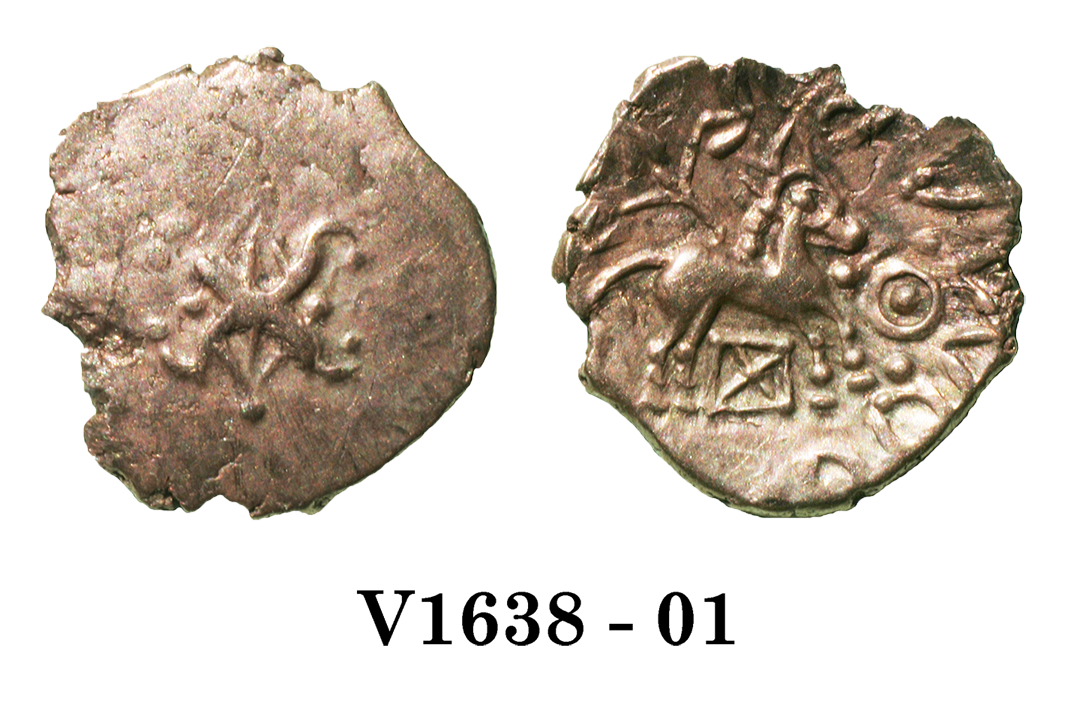
The stater and quarter stater of Addedomaros both carry an emblem on the obverse. Though it’s not exactly the same on each coin, there are some basic elements in common. Both have a pair of complex opposed curves with a pellet on either side. Both coins display diagonal lines inside the curves. The larger coin shows more details, however. There are a greater number of diagonal lines and there are lines of pellets inside the curves.
Yet both images seem to show the same emblem. The simplified image on the quarter stater seems to suit the size of the smaller coin.
So, again we have an image that can be simplified without compromising its meaning. These two coins demonstrate how Replicas can be used with varying amounts of detail.
As always, we would do best to undercode the meaning – suggesting nothing more than it identifies the Household of Addedomaros.
With some flight of imagination, we could easily overcode the meaning of this emblem. Don’t those curves and diagonal lines look like bows being drawn? Perhaps Addedomaros was an archer, or had an army of archers. But by making these extra interpretations we would be engaging in nothing more than wild speculation. Unless we had more information to support those meanings, they should be rejected. A written record describing an army, or archeological finds of archery equipment might do the trick, but we have no such evidence. Consequently, overcoding is the wrong thing to do in this case.
Looking for the inspiration behind Replicas
On other British Celtic coins, people have looked for the sources of inspiration for these emblems in the past. Coin images have been described as yew trees, all sorts of plants, boats, gods, wolf-and-twin-motifs, portions of images copied from other coins, etc. These attempts have been unconvincing for the most part.
Overcoding can look very clever, but in the case of Replicas it is usually nothing more than wild speculation. The reason is due to the fact that the actual range of things that could have been inspirational is much greater than one would expect.
Endless sources of inspiration
Alfred Gell, in Art and Agency, describes some of the inspirational sources for mediaeval imagery and gives other examples from modern ethnographic studies. For these images, we have more information than we usually do when we look at Celtic coins (info).
He describes the knot-work on mediaeval religious manuscripts as “Demon Fly-Paper”. The problem the scribes believed they faced was that demons would attack the religious writings. They solved the problem by placing complex knot-work patterns on the borders of the pages as a distraction. They believed the demons would become entranced by the intricate patterns and be thwarted in their attacks. Thus in this case the inspiration was the need for apotropaic devices. It was met by copying intricate patterns onto the manuscripts.
Gell goes on to describe the Kolam, an intricate linear design from southern India (from more modern times). Kolam were drawn free hand in lime, rice powder, etc. at the thresholds of houses to ward off or distract demons. Renewed every morning, they would be gradually worn away during the course of the day. Gell goes on to explain that the pattern eventually became copied as tattoos on the skin.
He also mentions the maze pattern of the Cretan labyrinth, which was copied on to coins – it identifies the coins as products of Crete. This image had its inspiration in the map of the labyrinth of the Minotaur at Knossos.
Yet a fourth example comes from Vanuatu. Men would draw intricate sand patterns on the beach “to demonstrate knowledge and mastery”, as Gell puts it. Competing men would draw the patterns to thwart a demon that was trying to prevent the men from finishing the design. Thus the men were competing in a piece of Performance Art in which they demonstrated who was best at beating the demons.
Gell’s most interesting example is that of patterns derived from the motions of line dancers. He gives the example of Malakulan dances in Vanuatu. The intricate designs describe the choreography of line dances, in which the straight lines are actually lines of people dancing. The connecting curves are paths of individual dancers weaving in and out between the lines of people.
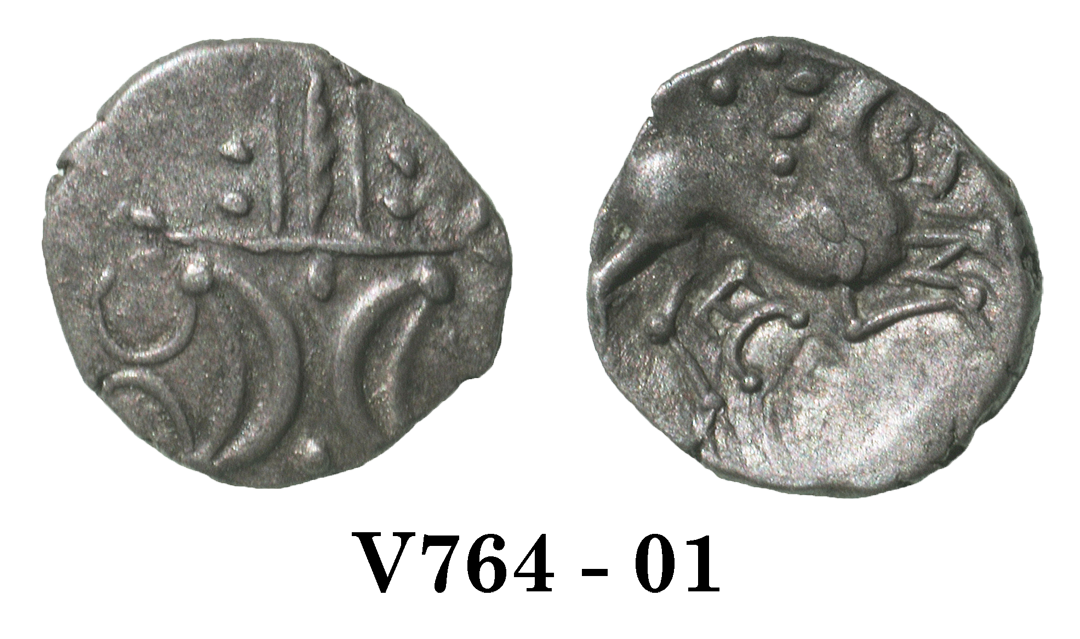
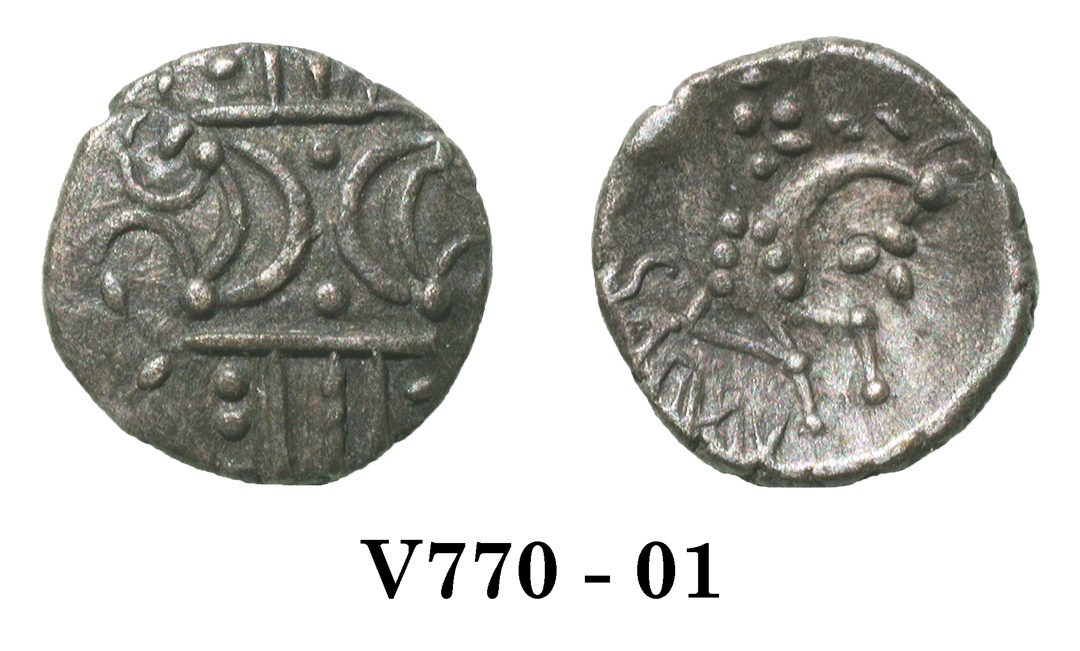
Consider the example of the Icenian Emblem shown on the two coins above. It would be very tempting to notice the crescents and suggest they denote a Moon Goddess. The denotation may very well have been the case, and this is a plausible suggestion. We could construct some elaborate meaning about the connection of a Moon Goddess to the Iceni and use this to concoct some complicated pseudo-ethnography.
But suppose, instead, that the pattern could be the choreography of a line dance – the knowledge of which has been lost for all time. We have no way to prove whether the Icenian Emblem is a religious symbol or an assertion of ethnicity embodied in a dance. It would be a waste of time to argue the point either way, or even to offer a third suggestion. We simply cannot know which suggestion is correct – we don’t have enough information to make a sensible choice.
The Icenian Emblem is a Replica and as far as we can tell it denotes nothing more than “Icenian Emblem” with a connotation that the coin was made by the Iceni. Any further elaboration of the sememe diagram constitutes unsupportable overcoding. We would need additional information to declare that the image is an Invention and not a Replica, thus worthy of overcoding.
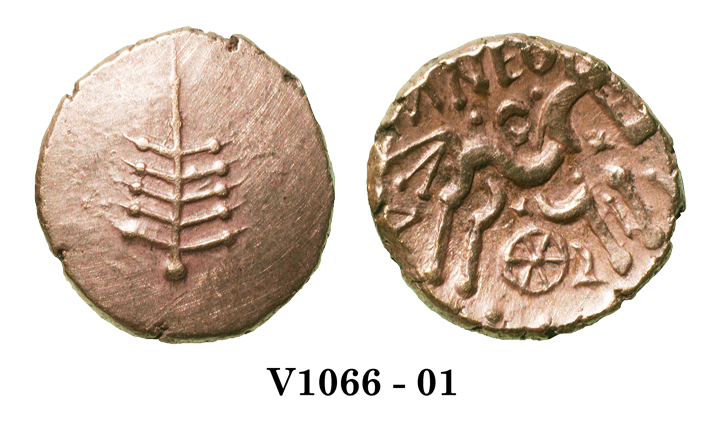
Thus, looking for an inspirational source and complex meaning for the Dobunnic branched emblem is really a waste of time (unless we have some new information to warrant doing so). Is it a tree or a plant? What kind of tree is it – a yew? If it’s a yew, does that mean it’s religious; were druids involved? Was the image a detail borrowed from the imagery on an earlier type and does that mean an alliance between two tribes?
All of these questions come from idle speculation. Any answers given will likely remain unproven. We don’t know the source of inspiration.
The Dobunnic Emblem is a Replica and Replicas should be undercoded.
End
